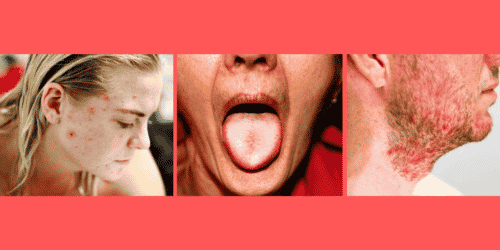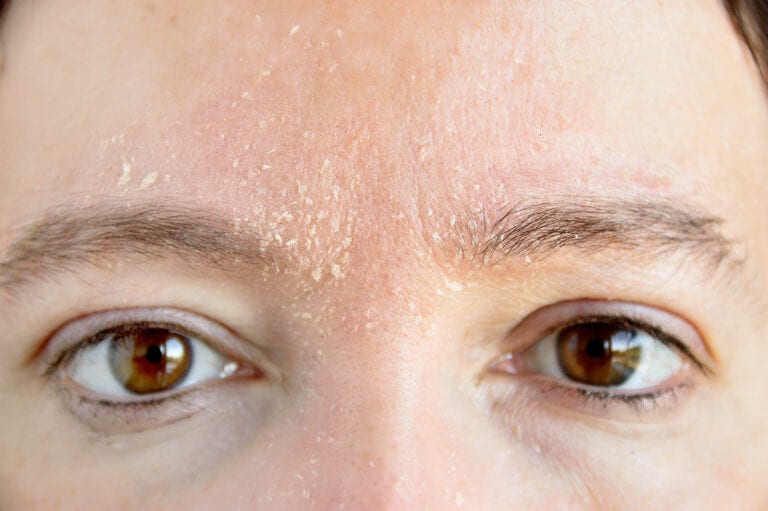- Expert consensus document. The International Scientific Association for Probiotics and Prebiotics consensus statement on the scope and appropriate use of the term probiotic. Hill C, Guarner F, Reid G, Gibson GR, Merenstein DJ, Pot B, Morelli L, Canani RB, Flint HJ, Salminen S, Calder PC, Sanders ME Nat Rev Gastroenterol Hepatol. 2014 Aug; 11(8):506-14.
- Hu L, Zhou M, Young A, Zhao W, Yan Z. In vivo effectiveness and safety of probiotics on prophylaxis and treatment of oral candidiasis: a systematic review and meta-analysis. BMC Oral Health. 2019 Jul 10;19(1):140. doi: 10.1186/s12903-019-0841-2. PubMed PMID: 31291932; PubMed Central PMCID: PMC6621984.
- Danby FW. The three acnes and their impact. In: Danby FW, Acne: Causes and Practical Management. Chichester, UK: John Wiley & Sons Ltd, 2014: 1–30.
- Plovanich M, Weng QY, Mostaghimi A. Low Usefulness of Potassium Monitoring Among Healthy Young Women Taking Spironolactone for Acne. JAMA Dermatol. 2015 Sep;151(9):941-4. doi:10.1001/jamadermatol.2015.34. PubMed PMID: 25796182.
- Baquerizo Nole K.L., Yim E., Keri J. Probiotics and prebiotics in dermatology. J Am Acad Dermatol. 2014;71:814–821.
- Volkova L.A., Khalif I.L., and Kabanova I.N.: Impact of the impaired intestinal microflora on the course of acne vulgaris [in Russian]. Klin Med (Mosk) 2001; 79: pp. 39-41.
- Muizzuddin N., Maher W., Sullivan M., Schnittger S., and Mammone T.: Physiological effect of a probiotic on skin. J Cosmet Sci 2012; 63: pp. 385-395.
- Kang B.S., Seo J.G., Lee G.S., Kim J.H., Kim S.Y., Han Y.W., et al: Antimicrobial activity of enterocins from . J Microbiol 2009; 47: pp. 101-109.
- Yamamoto A., Takenouchi K., and Ito M.: Impaired water barrier function in acne vulgaris. Arch Dermatol Res 1995; 287: pp. 214-218.
- Kim J., Ko Y., Park Y.K., Kim N.I., Ha W.K., and Cho Y.: Dietary effect of lactoferrin-enriched fermented milk on skin surface lipid and clinical improvement of acne vulgaris. Nutrition 2010; 26: pp. 902-909.
- Siver RH. Lactobacillus for the control of acne. J Med Soc New Jersey. 1961;59:52–53.
- Kim J, Ko Y, Park YK, et al. Dietary effect of lactoferrinenriched fermented milk on skin surface lipid and clinical improvement of acne vulgaris. Nutrition 2010; 26: 902–909.
- DaVeiga SP. Epidemiology of atopic dermatitis: a review. Allergy Asthma Proc 2012; 33: 227–234.
- Berke R, Singh A, Guralnick M. Atopic dermatitis: an overview. Am Fam Physician 2012; 86: 35–42.
- Sugarman JL. The epidermal barrier in atopic dermatitis. Semin Cutan Med Surg 2008; 27: 108–114.
- Novak N, Bieber T, Leung DY. Immune mechanisms leading to atopic dermatitis. J Allergy Clin Immunol 2003; 112: S128–S139.
- Berke R, Singh A, Guralnick M. Atopic dermatitis: an overview. Am Fam Physician 2012; 86: 35–42.
- Eichenfield LF, Tom WL, Berger TG, et al. Guidelines of care for the management of atopic dermatitis: Section 2. Management and treatment of atopic dermatites with topical therapies. J Am Acad Dermatol 2014; 72: 116–132.
- Schommer NN, Gallo RL. Structure and function of the human skin microbiome. Trends Microbiol 2013; 21: 660–668.
- Sanford JA, Gallo RL. Functions of the skin microbiota in health and disease. Semin Immunol 2013; 25: 370–377.
- Mottin VHM, Suyenaga ES. An approach on the potential use of probiotics in the treatment of skin conditions: acne and atopic dermatitis. Int J Dermatol. 2018 Dec;57(12):1425-1432. doi: 10.1111/ijd.13972. Epub 2018 Apr 20. Review. PubMed PMID: 29676446.
×
Why Choose to Autoship?
- Automatically re-order your favorite products on your schedule.
- Easily change the products or shipping date for your upcoming Scheduled Orders.
- Pause or cancel any time.






